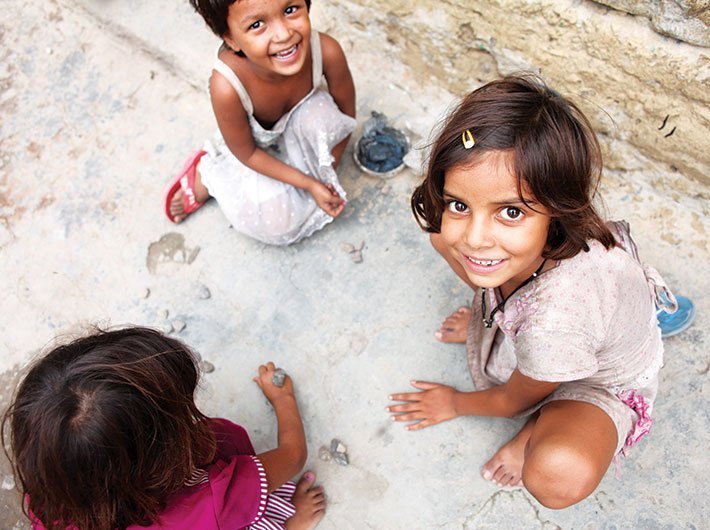The largest numbers of 10-year-olds today are in India and China, which account for about 20 percent and 12.3 percent of the world's total, respectively
Both India and China, which together are home to roughly one in three 10-year-olds alive today, are among the world’s fastest growing economies and have seen dramatic improvements in the opportunities available to youth, said UNFPA’s The State of World Population 2016 report.
It said that the typical 10-year-old today lives in a developing country. Almost nine in 10 of them—89 percent—live in less developed regions of the world, with half in Asia and the Pacific, including China and India.
Read The State of World Population 2016 report
“The largest numbers of 10-year-olds today are in India and China, which account for about 20 percent and 12.3 per cent of the world's total, respectively. In other words, one in five 10-year-olds today lives in India and one in eight lives in China. While 10-year-old boys outnumber 10-year-old girls in most countries, this difference is generally small and due mainly to natural differences in the sex ratio at birth, with the majority of countries having roughly 105 boys (or fewer) for every 100 girls. The exception is Asia and the Pacific, where, at the regional level, there are 111 boys for every 100 girls. This is largely driven by significant differences in the numbers of boys and girls in a handful of countries, including India and China, where there are 112 and 117 boys, respectively, for every 100 girls.”
The report added that in both these countries, the uneven sex ratio is largely driven by a strong preference for male children, which results in discrimination against girl children both before they are born (in the form of prenatal sex selection) and afterwards (in the form of discriminatory practices that increase the mortality of girls). In many ways, this is the most obvious representation of the discrimination 10-year-old girls face today, but it is far from the only one.
The report went on to say that the past two decades have also seen extremely rapid changes in the proportions of children attending school; dramatic declines in maternal, neonatal, and infant deaths; and a slow transition to greater gender equality. If these improvements continue and we collectively invest in developing this cohort in ways that allow them to maximize their potential, 10-year-olds may well prove pivotal to transforming the world for the better.
Forced marriage, child labour, female genital mutilation and other practices undermining girls’ health and rights threaten the world’s ambitious development agenda, warned UNFPA, the United Nations Population Fund, in The State of World Population 2016, released today.
Practices that harm girls and violate their human rights--starting at age 10--prevent them from realizing their full potential as adults and from contributing to the economic and social progress of their communities and nations. Without their contribution, the United Nations Agenda 2030 for Sustainable Development and its accompanying 17 Sustainable Development Goals may never be achieved.
Ten is a pivotal age for girls everywhere, as puberty approaches. In some parts of the world, a girl at this age enjoys limitless possibilities and begins making choices that will influence her education and, later, her work life. But in other parts, a girl who goes through puberty is suddenly seen as a commodity that may be bought, sold or traded, the UNFPA report shows. She may be forced to marry, pulled out of school and expected to start bearing children and begin a lifetime of servitude.
The State of World Population report notes that of the 125 million 10-year-olds today, 60 million are girls who are systematically disadvantaged at the global level as they move through adolescence into adulthood. Girls are less likely than boys to complete formal schooling at the secondary and university levels, are more likely to be in poorer physical and mental health, and will find it harder to get paid jobs.
Key points
• Nine out of 10 10-year-old girls live in developing countries, and one in five lives in a least developed country: one in five is in India, and one in eight in China.
• Each year of education delivers an additional 11.7 percent uplift in wages in later life for girls (compared with 9.6 percent for men). Yet, 16 million girls between 6 and 11 will never start school, twice the number of boys.
• If all the 10-year-old girls who drop out of school or do not attend school in developing countries completed secondary education, they would trigger a $21 billion annual dividend.
• Ten percent of 5-to-14 year-old girls do more than 28 hours of household chores per week, twice that of boys. Three in four girl labourers are unpaid.
• Every day, an estimated 47,700 girls are married before 18.


